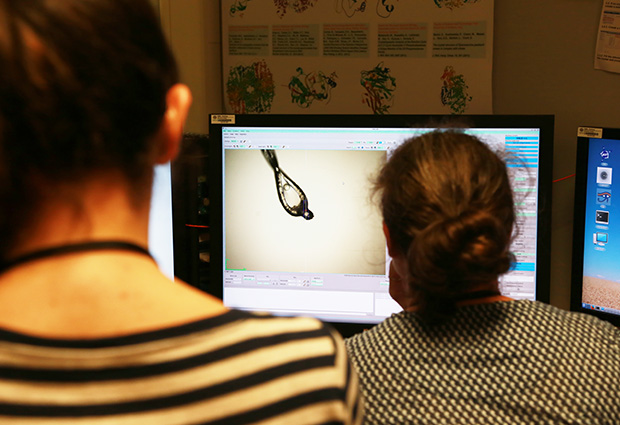
Leading the way in time-resolved crystallography
From breaking down pollutants into non-toxic chemicals to destroying bacteria in dirty laundry, naturally occurring proteins have been harnessed for a number of useful applications. Scientists in Hamburg are now working on a method which is hoped will make the search for new and potentially useful proteins a lot easier: time-resolved crystallography.

Together with Arwen Pearson from the Hamburg Centre for Ultrafast Imaging (CUI) at Universität Hamburg, EMBL group leader Thomas Schneider and his team are laying the groundwork to establish a programme of research, development and user services dedicated to time-resolved crystallography at the PETRA III light source on the DESY campus in Hamburg. A grant of 2 million Euro recently awarded by Germany’s Federal Ministry of Education and Research (BMBF) will in part be used to extend the EMBL crystallography beamline P14 to include a dedicated time-resolved crystallography endstation – making the experimental set-up more efficient and versatile.
“Time-resolved crystallography is ideal for studying biotechnology at the molecular scale” adds Schneider. “We are seeing a lot of interest from biotechnologists studying interesting proteins which may one day lead to new applications in the fields of agriculture, food and environmental science. We are looking forward to helping our users carry out this fascinating research” Schneider adds.
Traditional crystallography experiments involve taking a snapshot of a single state of a biological molecule such as a protein. Time-resolved crystallography, on the other hand, involves taking several snapshots in quick succession in order to observe how a protein changes shape following a reaction. While these types of experiments are already possible on the beamlines at PETRA III, more research and development is needed to optimize and refine the experimental set-up.
“PETRA III offers us the ideal beam parameters for this technique” says Schneider. “The DESY campus is already gaining a reputation as the place to do time-resolved crystallography and we are thrilled to have been able to secure this important funding to develop this technique further” he concludes.


